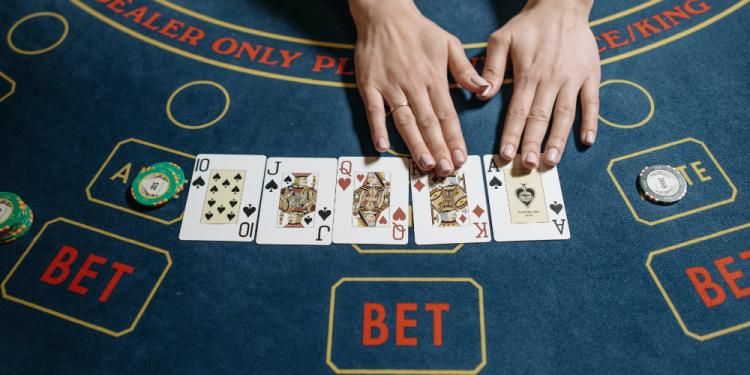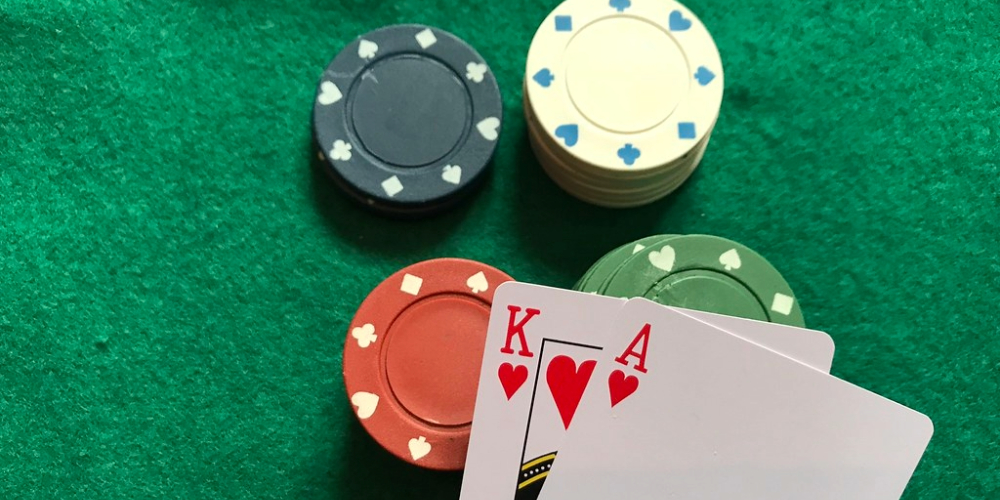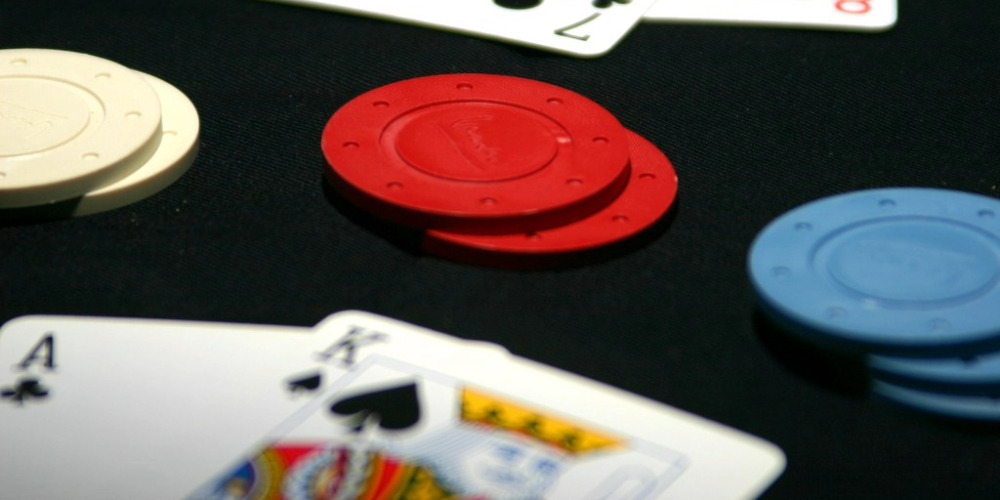Understanding Blackjack Strategy – To Stand Or Hit In Blackjack?
Posted: January 4, 2024
Updated: January 4, 2024
Hitting is a fundamental aspect of blackjack strategy. Essentially, you're balancing the risk of busting against the potential to improve your hand. We suggest that you make use of basic strategy charts to provide guidelines on when to hit based on your hand total and the dealer's upcard.

Blackjack is one of the most beloved games in casinos. However, it often presents the greatest dilemma of all casino table games: hit or stand? In truth, making that decision can take time. Yet employing a blackjack strategy can help streamline the whole process and in doing so, bolster your chances of winning. In this guide from Gamingzion.com, we delve into various blackjack strategies. Keep in mind our other dedicated site, Blackjackchamp.com, offers many more comprehensive insights into playing and winning at this iconic table game.
When To Hit In Blackjack?
Determining when to hit or stand in blackjack hinges on two primary options: hitting or standing. “Hit” requests an extra card from the dealer, either verbally or by tapping the table, while “stand” involves holding your total and concluding your turn with a horizontal hand wave. The decision relies on the dealer’s hand. For instance, if the dealer has an ace, aiming for a hand of 17 or higher is advisable, considering their strong likelihood of achieving a potent hand with a 10-value card (10, Jack, Queen, King).
Facing a dealer’s 10-value card, you still aim for a robust hand. Optimal moves include hitting with a hand of 10 or 12-16 and standing at 17 or above. An ace provides a chance to reach 21 with a hit. When the dealer holds a seven, eight, or nine, the inability to make a blackjack increases your odds. Yet, their potential for a hand of 17 or more demands a strong hand from you. Here, hitting with nine or less or 12-16 is recommended, while standing at 17 or higher is prudent.
Dealing with a dealer’s four, five, or six cards, avoiding a bust is crucial. Though a hit in Blackjack at eight or below is common practice, we suggest that standing at 12 or higher is advised. Against a dealer’s three, hitting at eight or below and 12 is prudent, while standing at 13 or higher is recommended. Finally, when the dealer holds a two, hitting at nine or less is wise, while standing at 13 or higher is the better choice.
When Should You Double Down Or Split In Blackjack?
Double down refers to doubling a bet after seeing your initial cards. Upon doubling down, one additional card must be drawn. Generally, it only makes sense to double down when your hand value is equal to 10 or 11. This is due to you having a 30.7% chance of hitting another 10-value card and therefore making a high hand.

According to online gambling news in the US, if your two cards initially dealt are pairs, you are offered the chance to split and you must indicate this immediately as the decision cannot be taken later. If you choose to split, your cards will be split into two standard hands as you match the original bet with a second wager. This means you now have the chance to double your winnings, and alternatively, your losses.
In online and live blackjack at a website like Bet365 Casino, it’s always advisable to split if you have a pair of aces or eights. The reason behind that is because there are more 10-value cards than any other in the deck and statistically there is a good chance of hitting at least one 21 when splitting aces.
Also, two hands of eight are easier to play than one hand of 16, where you have a very small chance of winning. When dealt a nine the statistics tell you it is best to split as long as the dealer has a two, three, four, five, six, eight or nine. However, it is best to stand if the dealer has a seven, 10 or ace. For other combinations;
- If you have a pair of sixes and the dealer has a card between two and six, the best option is to split. When you have a pair of sevens and the dealer has a card between two and seven it is also best to split.
- For a pair of fours when the dealer has a five or six, you should split, but in any other situation it’s best to hit in blackjack and take another card.
- For pairs of twos or threes, split when the dealer has a card between two and seven, but if not, it is best to hit.
- When you have a pair of fours and a dealer has a five or six then it is best to split.
Hit In Blackjack – How To Read A Blackjack Strategy Chart
Understanding the blackjack strategy chart is crucial for making the right moves – whether to hit, stand, split, double, or surrender. The chart provides colour-coded instructions, typically using letters such as H for hit, S for stand, P for split, and more. It’s essential to heed the key’s details as they might differ based on the chart you’re using. Generally, the dealer’s card aligns horizontally while the player’s hand is aligned vertically on the chart. Sections for hard hands, soft hands, and splits offer recommended movies based on statistical probabilities, although luck always plays a role.
According to online gambling news in the US, there exist two strategy charts: one for a dealer hitting on a soft 17 and another for a dealer hitting on a hard 17. It’s critical to identify the rule variation in play since moves can differ accordingly. Other variations of blackjack might have their own charts, although they’re less commonly used.
In a land-based casino setting where you can’t control the game pace, memorising key moves might be more practical than trying to recall the entire chart. For instance, it’s advisable to hit with a hard hand between five and eight and with a soft hand between 12 and 15. Doubling is recommended on a hard 10 if the dealer has two to nine and on a soft 18 if the dealer has two to six. Moreover, a general guideline is to never split fives or tens. While these aren’t comprehensive rules, it’s better to incorporate some moves from the simplified blackjack strategy chart than none at all if memorization proves challenging.
Avoid These Blackjack Mistakes
Common mistakes in blackjack strategy are crucial to avoid if you want to master the game and win. Simplifying the goal to reaching 21 might seem easy, but steering clear of errors is also just as essential. Here are some key blunders to watch out for:
- Not following basic strategy: Basic strategy charts exist for a reason—they optimize your decisions based on the dealer’s upcard. Ignoring or deviating from this strategy increases the house edge.
- Taking insurance: Taking insurance can seem tempting when the dealer has an Ace showing, but statistically, it’s not a favorable bet in the long run.

- Not understanding the rules: Each table may have slightly different rules (number of decks, when to hit or stand, etc.). Not understanding these rules can lead to suboptimal decisions.
- Over-betting or not managing the bankroll: Betting too much, especially after losses, can quickly deplete your bankroll. Having a proper betting strategy and managing your money is crucial.
- Playing based on emotions: Letting emotions like frustration or excitement dictate your decisions can lead to irrational moves and losses.
- Ignoring the dealer’s upcard: Your decisions should be influenced by the dealer’s visible card. Ignoring this crucial piece of information can lead to suboptimal plays.
- Not practicing proper table etiquette: Failing to follow table etiquette can annoy other players and the dealer. It’s important to understand and respect the norms of the game.
- Chasing losses: Trying to recover lost money by increasing bets dramatically can lead to even bigger losses. It’s essential to stay disciplined and stick to your strategy.
- Playing under the influence: Alcohol or any substances can impair judgment, leading to poor decision-making at the table.
- Not knowing when to quit: Sometimes, it’s better to walk away while you’re ahead or before you’ve lost too much. Setting limits and knowing when to stop can prevent substantial losses.
Ignoring Table Minimums
Start by considering the table’s minimum bet. Opt for the lowest stake possible to maximize your blackjack exposure while minimizing potential losses as you familiarize yourself with the game.
Stand Or Hit In Blackjack – Mastering Hand Signals
In contrast to movies like 21 and Rain Man, verbal cues like ‘hit me’ or ‘I stay’ won’t cut it at the table. Using hand signals not only avoids misunderstandings but also serves as a surveillance tool in case of disputes. So make sure you’re competent with the following;
- Hit: Scratch the table with your index finger.
- Stand: Wave your hand over your cards.
- Double Down: Place additional money (up to your original bet) and show the No.1 sign behind your cards.
- Split: Match your original bet exactly and form a V sign with your first two fingers.
Ace’s Value In Blackjack
Remember, that an ace can hold a value of either one or 11. Always be sure to consider this when deciding whether to hit or stand.
Summing Up – Stand Or Hit In Blackjack
Now you have a better idea of when to stand or hit in blackjack, are you ready to try your hand at the casino gaming table? Why not explore the blackjack and live blackjack tables, alongside an array of entertaining games, including slots and slingo, available at Bet365 Casino. Not only is it one of the best online casino sites in the US, but there’s also an impressive range of exciting games, along with the fact that you’ll also be rewarded with a generous welcome bonus on top of your initial bankroll, just for the honour of signing up for the first time.
Click here to try the live casino at bet365 Casino












